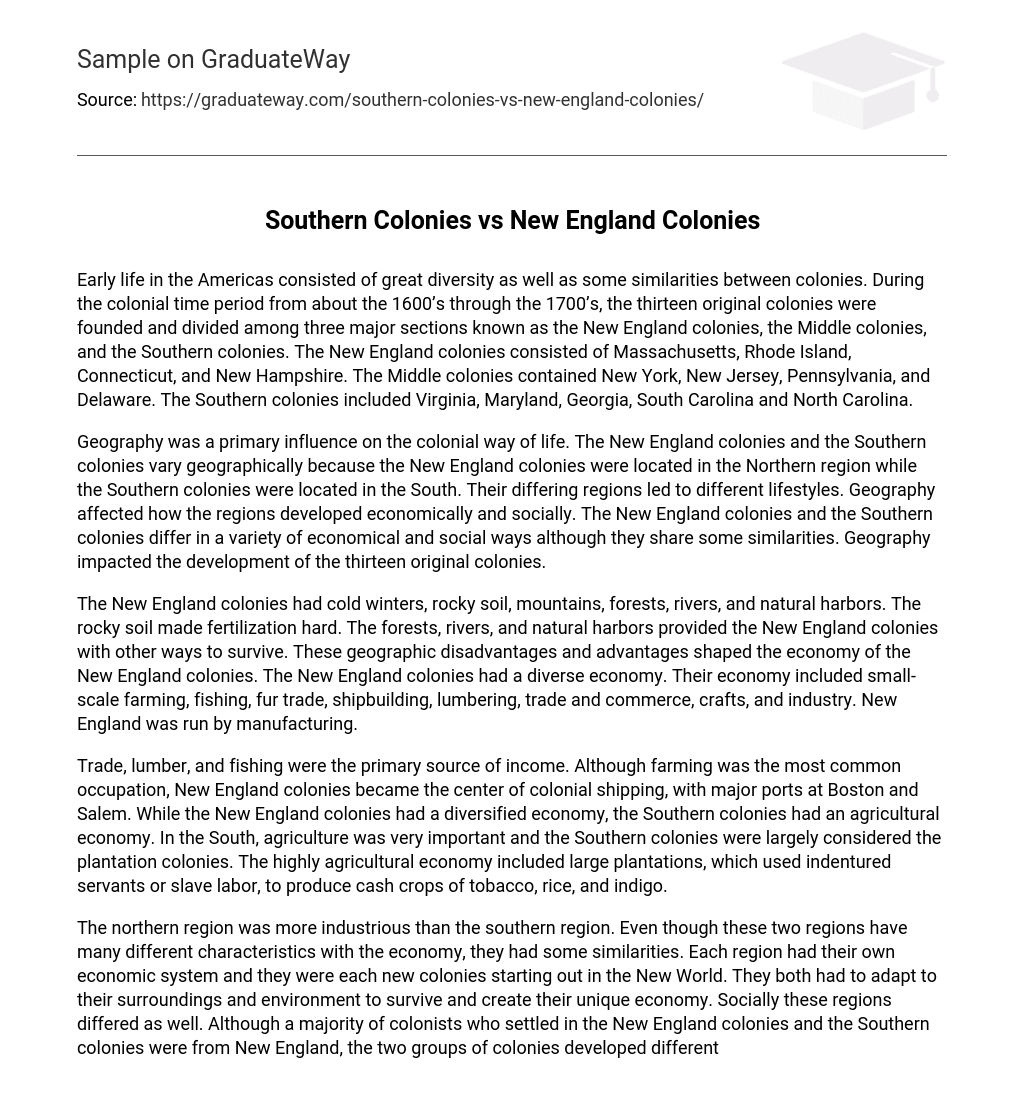During the 1600s and 1700s, the early colonies in the Americas had both similarities and differences. These colonies can be divided into three main regions: the New England colonies (Massachusetts, Rhode Island, Connecticut, and New Hampshire), the Middle colonies (New York, New Jersey, Pennsylvania, and Delaware), and the Southern colonies (Virginia, Maryland, Georgia, South Carolina, and North Carolina).
The geography of the New England and Southern colonies greatly influenced their way of life. The geographical distinctions between these regions led to distinct lifestyles, with the Northern region housing the New England colonies and the South being home to the Southern colonies. These geographic features heavily shaped the economic and social development of each colony. Although they share some similarities as original thirteen colonies, their economy and society differ significantly due to geography’s impact. In summary, geography had a significant influence on the formation and expansion of these colonies.
Despite the challenges of cold winters and rocky soil, the New England colonies were able to benefit from their mountains, forests, rivers, and natural harbors. While fertilization was difficult due to the rocky soil, these geographic features provided alternative means of survival. As a result, the economy of the New England colonies became diverse. This diversity included small-scale farming, fishing, fur trade, shipbuilding, lumbering, trade and commerce as well as crafts and industrial pursuits. Manufacturing played a vital role in governing this region.
In the New England colonies, trade, lumber, and fishing were the main sources of income. Despite farming being the most prevalent occupation, these colonies thrived as hubs for colonial shipping thanks to bustling ports like Boston and Salem. Conversely, the Southern colonies heavily relied on an agricultural economy where agriculture held utmost significance. These colonies were commonly known as plantation colonies due to their large plantations that utilized indentured servants or slaves to cultivate cash crops like tobacco, rice, and indigo.
In spite of their economic and social disparities, both the northern and southern regions in the New World were industrious and confronted parallel obstacles. Despite having distinct economic systems as new colonies, they had to adjust to their environments in order to prosper. In terms of society, there were significant variations between the New England colonies and the Southern colonies; however, both were primarily settled by colonists from New England.
The middle class in the New England Colonies was established through a unified system, which relied on cooperation among themselves. These colonies were governed by a theocracy, where the church controlled the government and recognized God or a deity as the ultimate ruler. The New England colonies maintained an organized way of life with towns typically consisting of a meetinghouse, houses, and a village green. Furthermore, they placed great importance on literacy and followed a Protestant work ethic. In contrast, social classes in the Southern colonies varied from those in the New England colonies.
The Southern colonies had a strict three-class system: privileged wealthy plantation owners, middle-class small plantation owners, and lower-class poor whites as well as indentured servants. African Americans were not considered part of any class. The largest social group was the farmers. The government in the Southern colonies was controlled by wealthy plantation owners, forming an oligarchy. The lifestyle in these colonies centered around self-sufficient plantations with few cities. Despite some similarities, there were social differences among these regions.
In the colonial period, the thirteen original colonies divided into three groups, each with its own government and structured social order. Despite variations in geography, economy, society, and politics, both the New England colonies and the Southern colonies had similarities. These regions possessed a well-developed economy, government, and social structure. The geographical factors of the colonies played a significant role in shaping their economic characteristics.





